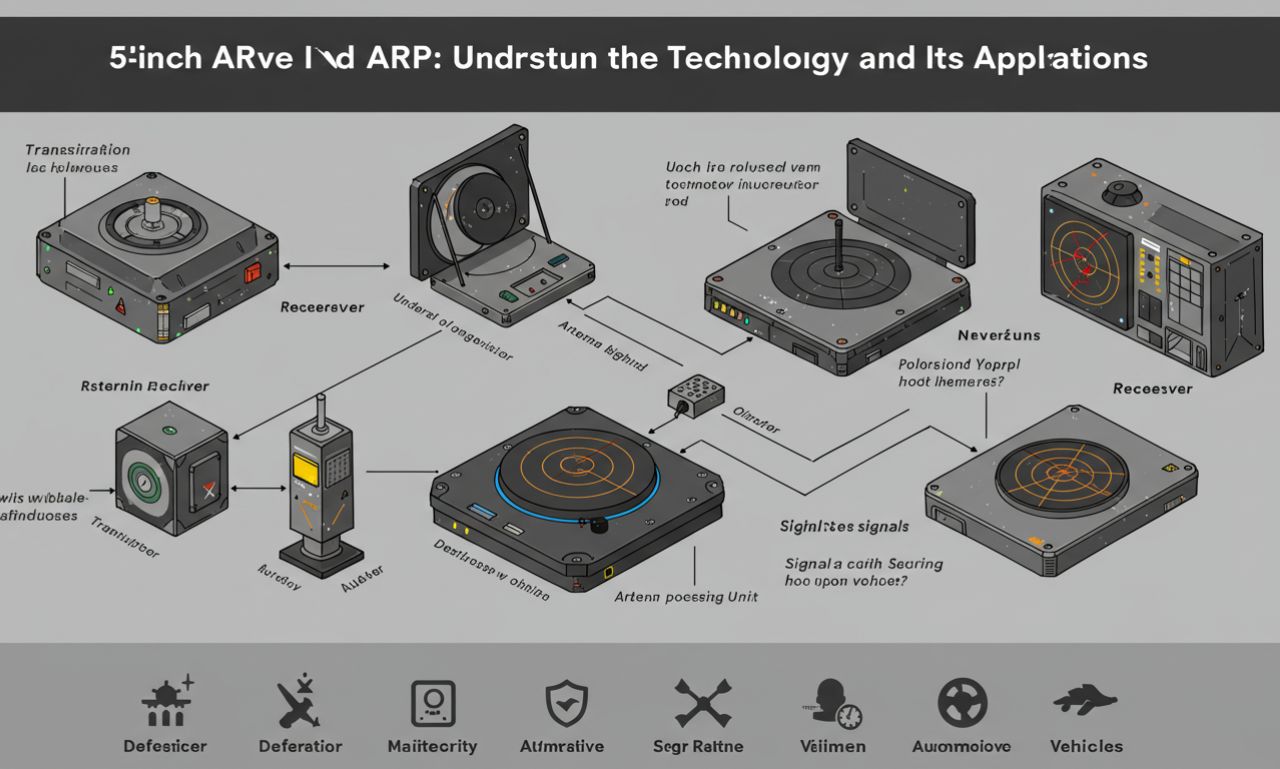In the fast-evolving world of technology and engineering, compact yet efficient systems are becoming increasingly important. One such system that has attracted attention is the 5inch ARP. Though relatively new as a term, 5inchARP refers to a five-inch component or adaptive system built to provide Advanced Reliable Performance (ARP). Its design principle is simple: deliver maximum output within a compact five-inch standard.
The 5inchARP is relevant in industries like engineering, automotive, aerospace, robotics, and even emerging digital technologies. Its compact size makes it an ideal solution where efficiency and space optimization are critical.
This article explores 5inchARP in detail, from its features and benefits to applications, risks, and its potential future.
What is 5inch ARP?
At its core, 5inchARP is a system, unit, or standard component sized at five inches that focuses on precision, durability, and versatility. The acronym ARP often stands for:
-
Advanced Reliable Performance in engineering contexts.
-
Adaptive Resource Protocol in computing and networking.
-
Applied Robust Precision in mechanical and aerospace sectors.
Regardless of the interpretation, 5inchARP represents compact engineering designed to deliver high performance while adapting to multiple industries.
Key Features
Compact and Efficient
The five-inch form factor allows the 5inch ARP to be integrated into systems where space is limited but functionality is non-negotiable.
Durability
Most 5inch ARP components are made with high-quality, durable materials to withstand stress, high temperatures, or heavy workloads.
Precision and Accuracy
5inch ARP units are engineered with tight tolerances and high accuracy, making them reliable for industries that demand exact results.
Versatility Across Sectors
One of the greatest strengths of 5inch ARP technology is its adaptability. From mechanics to computing, it can be tailored to meet sector-specific needs.
Scalability
The modular nature of 5inch ARP allows it to evolve with system upgrades, making it future-ready.
Applications
5inch ARP in Engineering
In engineering, 5inch ARP components are often used in machinery that requires compact yet efficient parts. Their small size makes them suitable for automation equipment, manufacturing robots, and energy systems.
5inch ARP in Automotive Industry
Automotive technology is one of the largest adopters of 5inchARP systems. They are used in:
-
Adaptive gear systems
-
Exhaust modules
-
Steering and braking systems
-
Energy-efficient hybrid and electric vehicles
The compact design ensures smooth integration into vehicles without sacrificing performance.
5inch ARP in Aerospace Technology
Aerospace engineering demands components that are lightweight, durable, and reliable. 5inchARP technology fits perfectly in this sector by delivering parts that reduce weight while enhancing safety and efficiency.
Applications include:
-
Navigation modules
-
Control systems
-
Lightweight structural components
5inch ARP in Robotics
Robotics relies heavily on precision-driven technology. The compactness of 5inchARP designs makes them ideal for robotic arms, motion control systems, and autonomous machinery.
5inch ARP in Computing and Networking
In the digital world, 5inchARP protocols may represent adaptive networking solutions or compact hardware systems. They are used to create:
-
High-performance computing modules
-
IoT communication hubs
-
Secure data transfer protocols
Advantages
Performance Efficiency
Despite its small size, 5inchARP delivers significant output, making it highly efficient for both mechanical and digital systems.
Adaptability
Its modular nature allows it to be customized across industries, from mechanical engineering to IT.
Reliability
The Advanced Reliable Performance principle ensures that 5inchARP operates consistently under demanding conditions.
Cost-Effectiveness
Though initially more expensive, 5inchARP units lower long-term costs due to their durability and reduced need for frequent maintenance.
Space-Saving Design
The five-inch standard helps industries save space, making 5inchARP perfect for compact systems.
Challenges
While 5inchARP systems offer many benefits, there are challenges to consider:
-
Integration Complexity: Custom systems may require reconfiguration before adding 5incARP components.
-
Technical Expertise: Installation and handling often require skilled technicians.
-
Upfront Costs: High-quality 5inchARP units can be costly during initial deployment.
-
Market Availability: As a specialized system, 5inchARP is not always widely available across all regions.
5inchARP vs. Traditional Systems
Traditional systems and components are often larger, less efficient, and more difficult to integrate. 5inchARP technology changes that by focusing on:
-
Compact Size: Compared to bulkier alternatives, 5inchARP saves valuable space.
-
Better Efficiency: Provides more output per unit size.
-
Customization: Traditional systems are rigid, but 5inchARP can be adapted to specific needs.
The Future of 5inch ARP
The future of 5inchARP looks promising across industries. With growing demand for compact, efficient, and versatile systems, we can expect:
-
Expansion in Robotics: Smaller robots will increasingly depend on compact modules like 5inchARP.
-
Adoption in Renewable Energy: 5inchARP could be integrated into solar and wind systems to improve efficiency.
-
Smarter IoT Devices: As IoT devices shrink, 5inchARP will provide adaptive communication protocols and hardware.
-
Advanced Aerospace Applications: Future spacecraft could rely on 5inchARP for lightweight, efficient, and precise components.
The development of nanotechnology and smart automation will likely enhance the role of 5inchARP in creating systems that are even more compact yet powerful.
Conclusion
The 5inchARP stands as a symbol of compact innovation, combining size efficiency with advanced reliable performance. Its applications span across engineering, automotive, aerospace, robotics, and digital technologies. While there are challenges related to cost and integration, its benefits in efficiency, adaptability, and reliability make it a valuable investment for the future.
As industries increasingly seek smaller yet more powerful solutions, 5inchARP technology is set to play a key role in shaping the next generation of innovation.

